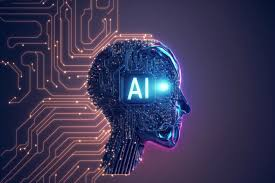Maximizing Your Business Potential with AI Tool
Specification: A Beginner's Step-by-Step Guide
Artificial Intelligence (AI) is
transforming industries by providing innovative solutions to complex problems,
enhancing productivity, and enabling data-driven decision-making. For
businesses looking to harness the power of AI, specifying the right AI tools is
crucial. This step-by-step guide is designed to help beginners navigate the
process of selecting and implementing AI tools to maximize business potential.
Step
1: Understand Your Business Needs
Identify
Key Areas
- Problem Areas:
Identify specific problems or inefficiencies in your business processes
that AI can address.
- Opportunities:
Look for areas where AI can add value, such as customer service,
marketing, sales, or operations.
Define
Objectives
- Clear Goals: Establish clear, measurable objectives for what you want to achieve with AI. This could be reducing operational costs, improving customer satisfaction, increasing sales, etc.
Step 2: Educate Yourself on AI Basics
Types of AI
- Machine Learning (ML):
Algorithms that learn from data to make predictions or decisions.
- Natural Language Processing (NLP): AI that understands and processes human language.
- Computer Vision:
AI that interprets visual information from the world, such as images and
videos.
- Robotic Process Automation (RPA): Automation of routine, rule-based tasks.
AI
Terminology
- Algorithms:
Step-by-step procedures for calculations.
- Data Sets:
Collections of data used for training AI models.
- Training:
The process of teaching an AI model using data.
- Inference: The process of making predictions or decisions based on trained AI model.
Step 3: Assess Your Current Capabilities
Infrastructure
- Hardware:
Ensure you have the necessary computing power, such as GPUs, for AI
processing.
- Software: Evaluate existing software and data management systems for compatibility with AI tools.
Skills
- In-House Expertise:
Assess the AI knowledge and skills of your current team.
- Training Needs:
Identify any training requirements to bridge knowledge gaps.
Step
4: Research AI Tools
Categories
of AI Tools
- Off-the-Shelf Solutions: Pre-built AI applications that are ready to use.
- Custom AI Solutions:
Tailored AI solutions developed specifically for your business needs.
- Open-Source Tools:
Free AI tools and libraries available for customization and development.
Evaluate
Options
- Vendor Comparison:
Compare different AI vendors based on features, costs, support, and user
reviews.
- Trial Versions:
Use trial versions to test the tools' capabilities and ease of use.
Step
5: Develop a Pilot Project
Scope
the Project
- Small Scale:
Start with a small, manageable project to test the AI tool's
effectiveness.
- Clear Metrics:
Define success metrics to evaluate the pilot project.
Implementation
- Data Collection:
Gather and preprocess the data needed for the AI model.
- Model Training:
Train the AI model using your data.
- Testing:
Test the AI model to ensure it meets the defined objectives.
Step
6: Evaluate and Iterate
Analyze
Results
- Performance Metrics:
Analyze the performance of the AI model based on the success metrics.
- Feedback Loop:
Gather feedback from stakeholders and end-users.
Iterate
- Refinement:
Make necessary adjustments and improvements to the AI model.
- Scaling:
Plan for scaling the AI solution across the business once the pilot is
successful.
Step
7: Plan for Long-Term Integration
Integration
Strategy
- Systems Integration:
Ensure the AI tool integrates seamlessly with existing systems.
- Process Changes:
Update business processes to incorporate AI insights and automation.
Continuous
Improvement
- Ongoing Training:
Regularly update and retrain AI models with new data.
- Monitoring:
Continuously monitor the performance and impact of the AI solution.
Conclusion
Implementing AI tools in your
business can significantly enhance efficiency, productivity, and innovation. By
following this step-by-step guide, beginners can systematically approach the
specification, selection, and implementation of AI tools to maximize their
business potential. Remember that AI is a journey, and continuous learning and
adaptation are key to long-term success.




Comments
Post a Comment